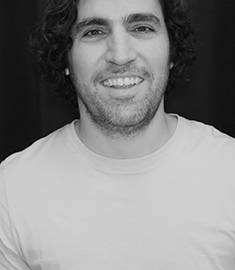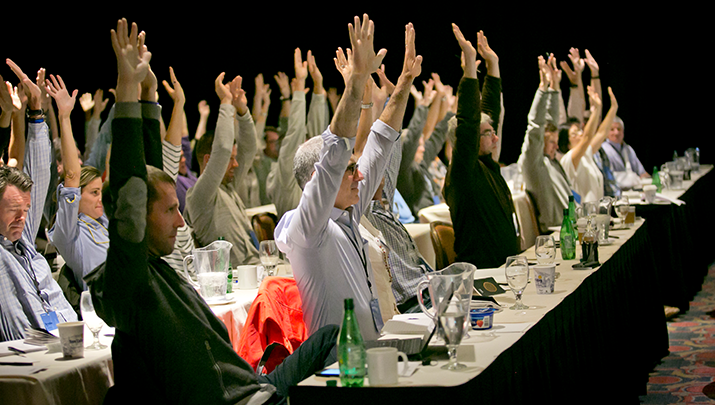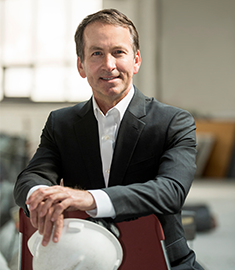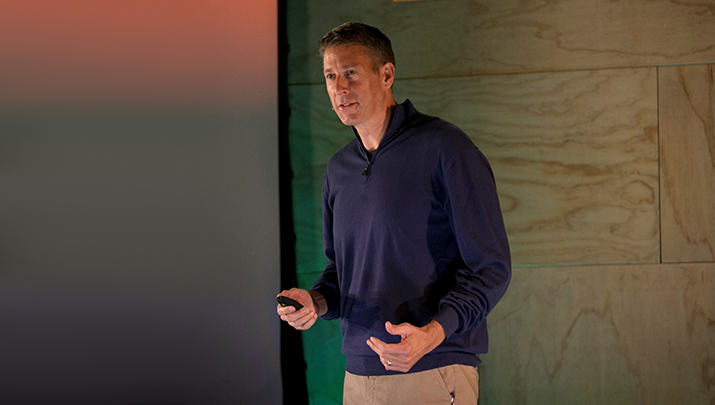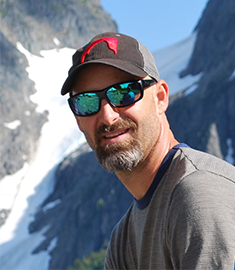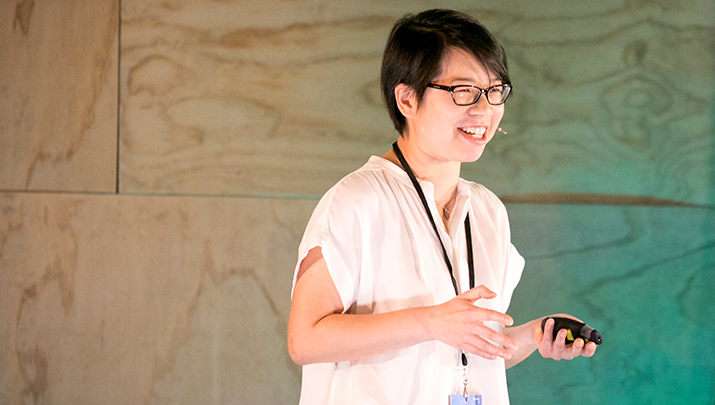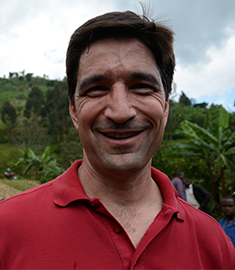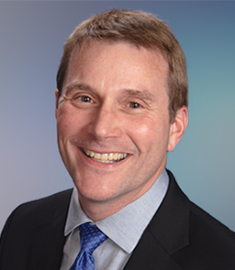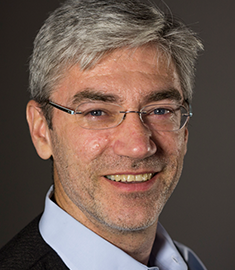Gourmet Popcorn With a Purpose
Last year, Double Good made a decision that defied the most fundamental principles of business: We decided to give 50 percent of every dollar to charity. While this decision seemed to defy logic, to me it was the only logical next step in defining our Evergreen company’s Purpose.
Walking out of my brother’s popcorn shop in 1998, I wasn’t thinking about purpose. One never imagines they’ll find their calling at the bottom of a bag of popcorn. For me, popcorn meant joy and I wanted to share this joy with others. I asked about working with Popcorn Palace, the company he licensed from, and discovered they were facing bankruptcy. I was able to acquire their name and a list of their customers for $2,600.
By the end of that year, operating from a small warehouse in Northwest Indiana, we had brought in $110,000 in revenue. I went about creating new markets for our product: corporate gifts, wholesale, gift baskets, e-commerce and private label. By 2005, Popcorn Palace was bringing in over $2 million a year, attributed mostly to big accounts like Costco and QVC.
These big-box stores, where little guys like me dream of doing business, loved the popcorn, but that love quickly got lost in the shuffle of spreadsheets and corporate politics. One day, I looked at what we’d built and realized we had been doing everything “right,” but the joy was gone.
Around this time, as a side experiment, we set up a small fundraising channel in which students and organizations could sell popcorn and retain 50 percent of every dollar.
Following one particularly deflating call with a Costco account manager, I noticed an envelope on my desk addressed to me in crayon. The letter inside was a thank-you from a boy in Seattle who had just returned from a band competition in Washington, D.C. He said our fundraiser had enabled him to take this important trip with his classmates, and he stated how much he loved Popcorn Palace.
I felt as I did that day in 1998 leaving my brother’s store — I knew everything should change. I’d rediscovered my purpose in the most unexpected of places. My dreams for Popcorn Palace shifted in that moment from growing revenues through traditional channels to growing people’s potential through their sales of our product. Over the next few years, we ended our relationships with big-box stores and eventually eliminated all of our wholesale accounts. We kept two channels — corporate gifts and e-commerce — but it was our dedication to fundraising that finally gave our company Purpose with a capital P.
As time passed, fundraisers became a bigger part of our culture and our business. We tweaked the product lines and made the process more efficient for our customers. We then turned our sights to the other two remaining channels, corporate gifts and e-commerce. They were bringing in about a million dollars a year, but it was obvious they weren’t fulfilling our corporate Purpose. There was only one answer: 50 percent of these sales should benefit a cause as well.
We had to make some big changes to accommodate this dramatic shift in vision. We transitioned to a self-management structure that made us leaner and brought those within our organization closer to our Purpose. We began to move marketing from traditional to social media. We eliminated many products and redesigned our packaging, which reduced manufacturing and design costs.
It was last year that we publicly announced we would be giving away 50 percent of all of our sales, first to a variety of partner charities, but eventually to our own foundation, which benefits kids with special needs. We also changed our name to Double Good. There’s an old proverb that says when we share our joy, it’s doubled — that’s the principle behind everything we do. Delicious popcorn? Good. Donating 50 cents of every dollar to help the world be a better place? Double Good.
Along with the excitement and challenge of the rebrand was an initial hit to sales. The first quarter of this year was the first time since our 1998 launch that we have seen a decline. It was a tough start to the year but I am happy to share that our sales are recovering nicely, and we expect that we will be more profitable than ever before.
In fact, for our 19-year-old Evergreen company, this is just the beginning.
Timothy Heitmann is the founder & CEO of Double Good.
Scrappy Stories
Pragmatic Innovation is an essential value of Evergreen companies. In this candid video, members share their stories of the most amazing things they’ve accomplished with very limited resources.
Featuring: Don MacAskill, Will Snook, Wynne Odell, Darcey Croft and Dan Kenary.
From Rural Kentucky Poverty to Chief Executive
As a child, I never imagined that one day I would be the president and CEO of the largest architecture, engineering and interior design firm in Kentucky. I grew up poor on a tobacco and dairy farm in rural Kentucky. It was land given to my French ancestors for their military service in the Revolutionary War, but that makes it sound more glamorous than it was. The reality of life on the farm was that times were tough. As my grandfather used to say, “We were land rich but money poor.” Due to some unique family challenges and the declining agricultural economy of the 1970s, we were essentially living as sharecroppers on our own land. We lived in a tenant house on the farm that my mother fixed up. Despite having no plumbing in the house until I started school, she did her very best to make our little farm house a home.
Food was scarce, and there was certainly no extra money for clothes and toys. But here’s the thing — we were happy. That’s the way it is with poverty sometimes. You often don’t know what you don’t have. We worked incredibly hard in the tobacco fields but we didn’t know anything different; that’s just the way it was. We worked together as a family, including all five of my siblings. My father worked harder than anyone I have ever known. To this day he has a sense of peace that can only come from a hard day’s work. He instilled in me a work ethic that has served me well throughout my life, but that would also haunt me as I struggled later to find a work-life balance.
But for now, the hard work was paying off. After the tobacco crop was harvested, my brothers and sisters and I would pick up the discarded leaves in the field and on the barn floor and sell them. This gave us a little extra money that we would share. Early on we would pool our money to buy something together, like a family motorcycle, or save the money individually to buy a first car or add to a small college fund. We all excelled in school, both in academics and extracurricular activities. My parents didn’t have the opportunity to attend college, but there was never any doubt that we would. They emphasized that family, hard work, love and education were the keys to our success in life.
In 1980, I entered the College of Design School of Architecture at the University of Kentucky. As a child, I was artistic and creative, the resident artist at home and at school. Always sketching or painting; school murals and stage sets. Coupled with my love for the land and nature, I found beauty in the rural outbuildings and was fascinated with construction and fixing farm machinery. I would later come to understand that my early passions reflected the fusion of art and science that is architecture. I can still remember the dappled sunlight filtering through the slats of our tobacco barn and thinking that this was the most beautiful place on earth.
While I watched my college classmates navigate through the architecture program, I had to take my time. In order to afford college, I had to work several jobs, which meant I didn’t have as much time for classes. As it turned out, five of the six siblings in my family were attending UK at the same time. Once again, we all took care of each other as we made our way through college. It took me seven years to get through a five-year program (which earned me a professional degree: bachelor of architecture), but it was worth it. At one of those jobs, at a local pizza parlor, I met the woman who would later become my wife and the mother of my children. By the time I graduated in 1987 with several design awards, I was married with a bouncing baby girl.
When I landed my first job at an architecture firm, I thought my hardest days were behind me. But I was wrong. My first boss, who was a fine man and a good architect, was not the kind of mentor I needed. I was young, talented and ambitious, and he was more than happy to give me all the opportunity I could handle — and then some.
He gave me a tremendous amount of responsibility, which I eagerly accepted. It was an exhilarating but ultimately exhausting combination. I was helping manage the office, running projects and getting some amazing opportunities to contribute my design skills toward things like designing a church (St. Margaret Mary in Louisville), but at a time when I wasn’t fully prepared for that level of responsibility. My passion for design was driving me. To compensate, I worked 70-hour weeks. Then, on the weekends, if I wasn’t in the office I was often back on the farm helping my parents.
My work ethic had always helped me succeed in the past but in this case — it turned on me. I had little time for my growing family; we now had three children. On the farm, family was everything as we worked together but now, work was taking me away from them. I was torn between wanting to be successful and a good provider versus the thing that was most important to me: time with my family. My children would say I was a great father back then, but at the time, the work was taking a toll on my marriage and we were struggling. After 15 years with the same firm (intern to vice president), I realized I had to make some serious changes.
My first move was to find a new job. I wanted to be with a firm that was larger and more established, where I wouldn’t have to wear so many different hats. I found that in Luckett & Farley, a 160-year-old architecture and engineering firm in Louisville. There I had access to many great people with new and different ideas about work and life. I became close to the vice president for business development, Belinda Gates. Belinda was the kind of person who made you feel good about yourself. Everyone liked her and she was good at building relationships and creating winning work. She encouraged me to follow my passion for design, and together we brought a lot of work into the office as I began to grow our higher-education market.
My work-life balance was improving, but it was too late to save my marriage. While going through a divorce, I asked the leadership at L&F to allow me to take a hiatus from the firm. I had been offered a job rebuilding the middle and high school campuses in our local school district. The time away allowed me to spend much-needed time with my children (who attended school on the same campus) and build a closer bond than we ever had before. When the projects and the divorce were finished, Luckett & Farley welcomed me back as the market director for higher education. I would later become a vice president and ultimately a senior VP to help lead the firm.
Earlier this year, I took over as president and CEO and surrounded myself with a leadership team that shares the same values. When I sat down to think about the way we wanted to lead the firm, I reached back to the principles I learned on the farm: hard work, yes, but living a life with Purpose, having Perseverance and being family- and People First-focused is the most important. I realized that Evergreen principles have always guided me.
So now I’m working hard to keep those principles in place, not just for the good of our employees but for the good of our firm. We try to lead by example. When we work, we work hard; in fact, “we kill it!” But when the day is over, I turn out the lights and head home at a reasonable hour and (when I can) I turn off my cell phone on weekends. We make sure that our employees know we are working for something bigger than just money. We want to be client-focused and employee-centered — that’s our sustainable business model. We’re planning on Luckett & Farley being around for at least another 160 years.
When I can, I still go back to the farm to help my father (who is a sprightly 77) and brother set up their garden in the spring. The tobacco barn that once stirred me to think about architecture is no longer there. Instead of focusing everything on my work, I take the time to enjoy my family and the beauty around me. These days I find great comfort in the simplicity and peace of where I started.
Aric M. Andrew is the President and CEO of Luckett & Farley
Reinventing Radio Flyer
Even a legendary, 100-year-old brand like Radio Flyer — the little red wagon that's become an iconic part of the lives of millions of children — needs to work hard to ensure its continued success. “I knew we had all this great stuff about our brand," says Robert Pasin, Radio Flyer's CEO. “But I soon learned that the company was at kind of a crossroads and we have some problems.”
In his Tugboat Institute Summit talk, Pasin shares the origins of his family business and his desire to continue to build upon his family’s brand while developing a culture that fosters creativity and innovation. It’s the company’s values and mission-driven work environment that help fuel Radio Flyer’s continued growth.
Remote Workforce, Close-Knit Culture
With 43 percent of all Americans now working remotely, according to Gallup, many businesses are dealing with the problem of maintaining company culture with employees who might never be in the same place at the same time. The trend presents an interesting challenge for Evergreen companies that make putting People First a central part of their business philosophy. But for us it’s more than an interesting challenge — it’s critical.
At my four-year-old hospital staffing company, CT Assist, we have 10 administrative employees working remotely full-time and about 40 “travelers.” Our travelers are cardiac- and orthopedic-surgery physician assistants, nurse practitioners and perfusionists who fill in at hospitals that are short-staffed. We hire the full-time travelers as W-2 employees, and the hospitals then enlist CT Assist to provide the service. We are registered and operate in over 20 states, so this means our folks are often on the move as they travel to standard 13-week assignments.
From the very beginning, my partner, Scott Yoder, and I wanted to make sure our Evergreen company lived up to the People First principle. We created the company because we saw many talented physician assistants leaving cardiac surgery because they were burned out. Our goal was to make CT Assist a better place to work — to provide people who have chosen this career with jobs, schedules and lives that they love. We are their voice in negotiating rates and preferred work hours. We attract great candidates with benefits like vacation time for our travelers (not standard in our industry), excellent health insurance, matching 401(k), and ongoing training and educational opportunities.
When your team is highly dispersed across half the country and has little reason for routine interaction, how do you ensure your company values are being upheld across all employee and customer experiences?
First and foremost, our culture prioritizes relationships, so the office staff is on the road a lot getting to know our travelers. We visit them at their assigned hospitals to make sure their working experience is ideal. We take them out for dinner or drinks — whatever they want to do in order to build up our personal connection. This is how we learned that one of our employees had been placed in a miserable apartment situation. CT Assist immediately found a new housing assignment for this person and cut our losses. It’s good for people who might be in a new state every couple of months, in temporary housing, to have that connection and to know that we’re a team that has their best interest in mind.
In order to make sure everyone in the office is aligned and connected, we all join a 10- to 20-minute call every single morning, no matter where we are. We share wins and worries, a quote of the day and even a few laughs. It’s also good for the team to hear us praising decisions that were made where someone at CT Assist did the right thing — not for profit, but to support our provider or customer. After all, that’s how cultural values are disseminated and hopefully then emulated.
The application Slack has helped us lose the formality of emails and the multiple phone calls required to communicate with a dispersed staff. As counterintuitive as it sounds, the various channels Slack provides are great for quick conversations, which has improved communication and offered an instant team connection and understanding even to new staff.
We just launched a company email newsletter. It’s still in the early stages, but I think it will, again, help with bridging the distance between us. I love the idea of people seeing pictures of each other and hearing their stories. It helps people feel less isolated on assignment.
Something else we recently implemented is called Intentional Engagements. If someone goes above and beyond in their work, we send them a gift card, flowers to their spouse if they are traveling, or a simple thank-you note. It’s just another way of showing people that while they may be doing most of their work, they are very much part of our team, and we appreciate their diligence.
Our methods to keep our employees connected will surely keep evolving. Right now we host semiannual retreats for our office staff, but perhaps we’ll one day be able to do this for everyone.
The biggest challenge for us as we grow is empowering our newer managers with the ability to make People First decisions. Often, these folks are coming from bigger companies with less employee-oriented cultures. We believe the best way for them to learn is by showing — and all the techniques I’ve mentioned help even remote managers clue in to our relationship-based culture.
At the end of the day, we have strengthened the sustainability of surgery programs across the country. But we have also sustained a strong Evergreen company, even as our network expands throughout the nation.
Jairemy Drooger is the Co-founder & COO of CT Assist.
How to Build a Bootstrapped Consumer Business
During the 2008 economic downturn, Stella Ma and her business partner, Amy Norman, created a children’s education subscription business called Little Passports. Her passion to make travel more accessible and affordable to all children has led Ma to achieve a $25 million run-rate business. Her Perseverance these past nine years led to a household brand name that continues to innovate with expanded products including digital animation, books and localized goods. In her talk, Ma reveals the five strategies that have helped her consumer-brand company grow profitably without outside capital. Recently, Little Passports was named one of the top 10 best places to work by the San Francisco Business Times.
Encouraging My Employees to Take Risks Has Paid Off for My Evergreen Company
Although I’m an introvert by nature, I’ve always worked hard to push myself outside of my comfort zone. I initially trained to be an engineer, but when I was 25 years old I switched paths and went to business school to become an entrepreneur instead. I spoke no Spanish, but when the opportunity arose in 2000 for me to move to Barcelona for my wife’s job, I gave up a partnership in a consulting company I co-founded and jumped at the life opportunity — a huge risk for someone saddled with a mountain of school debt just starting a family.
But those risks have always paid off.
In Barcelona, I pragmatically took up writing a manual on project management for the security industry (my entrepreneurial field when I was in the U.S.), but soon noticed there were no boutique hotels in one of Europe’s coolest cities. So I took a risk and tried to start a boutique hotel.
Meanwhile, one of my contacts from writing the project management manual was a California businessman who was running a 13-person security agency with no exit strategy. That contact led me to my greatest risk of all: In 2005, I told him to give me 100 percent control of the company on day one, and I would buy him out in 10 years.
This was the risk that would consume the rest of my professional life. I turned that business into Northland Controls, an Evergreen company that installs, integrates and manages security programs for companies around the world. We have 260 employees and will bring in $75 million this year. Much of our growth comes from Pragmatic Innovation. To spur that innovation, I’ve encouraged our people to take their own risks as often as possible.
When I first came on as CEO, I wasn’t sure how to instill a risk-taking ethos in a group of grown adults. Conference-room icebreakers didn’t seem quite right. Then, almost by accident, an employee showed me the way.
In 2008, I asked one of my technicians to go to India to oversee a project there. He was initially horrified by the poverty and seemed like a fish out of water. But within three days, he adapted so well that he would convince the tuk-tuk drivers to let him drive to the project site, with them in the back seat. At some point, he discovered that there was a 2,000-kilometer tuk-tuk race across the country, so I sponsored him to enter. It built his self-confidence and showed him that he could survive without any sort of technology. It also made him eager to explore the world on behalf of Northland. In one year he traveled to 25 countries.
This was just the beginning. I realized that trips and challenges like this communicate to our employees that Northland encourages and honors people who are willing to take huge risks. It has also helped us expand internationally as our employees have immersed themselves in other cultures in ways our competitors would never consider.
Since then, I have sent people to rural Uganda and Rwanda to help install solar panels, and to Armenia, the Nagorno-Karabakh Republic and Georgia to ride 4x4s in the Caucasus Mountains, as well as to the American Southwest to expose our folks to the American can-do spirit. We’re heading to Nepal in 2018. Of course, not everyone is up for a rugged trip to rural Africa — and I understand that. Recently we worked with GRID Alternatives on a “solarthon” day in the Bay Area, where 10 of our people installed solar panels for a low-income family in Menlo Park. We are now working with GRID Alternatives on a project every six months. All of these experiences, which often include a humanitarian aspect, are designed to encourage risk-taking.
Not only do these challenges, which are all voluntary, help our people step into uncomfortable situations and learn to expand their horizons — they also help them bond. Employees of all levels must work together as equals. It’s a really amazing experience that encourages everyone to trust each other.
It’s also helped us grow our company’s bottom line. After crossing the Caucasus, our appropriately risk-averse CFO took on the risk of building up our overhead, a painful decision that nonetheless has allowed us to scale up the rest of the business. After a tuk-tuk trip in India, my managers realized the importance of picking up a phone and talking to the locals rather than sending endless emails with instructions. That mindshift has translated to us having a stellar record for getting our work done on schedule in a country where deadlines are notoriously difficult to meet. And after trekking through Rwanda, one of our technicians was able to talk to and bond with colleagues from across the different disciplines in our company, and realized he wanted to be an application engineer. When we got back, he got a chance, and within a year was embedded with one of our clients (a well-known social media company), and quickly became a crucial part of our value to the client.
I have a team of people who are very close and who are comfortable in any sticky situation, no matter the country. That’s a vital advantage in the security industry, where we work with fast-moving customers and rapidly changing technologies.
In my life I’ve written two great business plans and gone out looking for money twice — once with a plan to write apps on PDAs (the clunky precursors to smartphones) and once for my hotel in Barcelona. From those experiences I realized that I am not good at selling myself and convincing people to invest in my ideas.
But I was able to use the knowledge I gleaned from those experiences to build Northland Controls. We have grown the company to $75 million in 12 years and we did it with no business plan, no sales and marketing people for the first 10 years, and no cost controls. Those are the kind of things that would have driven investors crazy. I’m happy not to have to worry about that.
Pierre Trapanese is the CEO and owner of Northland Controls
How Pragmatic Innovation Helped Me Save My Faltering Company
I’m an accidental CEO. I stepped into this position four years ago when the company I was working for, Wall-tech, almost went out of business.
At the time, I was a minority stockholder and vice president. Wall-tech, which specializes in framing, drywalling and finishing, had been hit hard by the recession. We depend on new construction for much of our business, and as everyone remembers, new construction all but dried up after the housing bubble burst. The situation was dire and our board of directors was weighing liquidating the company. But I loved Wall-tech and couldn’t bear to see its 100 employees let go.
So I begged the majority stockholders for a chance to turn things around. They gave me three months.
Instead of giving in to the panic I felt, I moved into survival mode. My background was in architecture and construction, not business management. So I hired a good accountant and a CFO to help me figure out a plan. I pulled every penny out of my savings account and lined up a few personal loans, a business loan and an operating loan. I managed to cobble together around $2 million, enough to buy out the three former partners and keep all the employees on staff.
And then my real work began.
The buyout happened in the spring of 2013, and in order to get another bank loan that fall, we were going to need to show a good financial report card. Wall-tech had operated the way a lot of small businesses do, without a contingency plan. But now, in the midst of a financial crisis, I had to develop a plan that I could quickly implement and easily execute. Of course, execution is the hard part.
So I embraced a new concept for the company: Evergreen. In particular, I started promoting the Evergreen principles of Pragmatic Innovation and Profit. I looked at what was really going on in the company and I used that information to help me make decisions about the future.
I started with forecasting and strategic planning so that we could see where the company was headed over the next five to 10 years. Wall-tech was full of great people but had some underperforming divisions that looked like they could eventually sink the company. So we made the tough decision to downsize by cutting those divisions way back and selling most of the equipment to make sure we’d have no temptation to return those lines of business to that size again.
But the team strategy and forecasting meetings also revealed some promising news. It looked like there would be major labor shortages in the construction industry when the economy picked up, which would ultimately impact our customers’ ability to meet schedule demands. We decided to take a crack at the prefabrication-building-components division because the ready-made structures would allow us to adhere to our schedule and maintain our commitments. We were able to jump into the market with both feet and have been very successful there.
I’ve long been a devotee of Jack Stack’s Great Game of Business, so I implemented some of his teachings right away. Inspired by his open-book management ideas, we started doing financial-literacy training. Our company is spread across three states, so it can be hard to communicate sometimes. We set up a better system to keep key employees aware of our finances on an ongoing basis so they could make smarter decisions that would help our bottom line.
I also decided we should move to a Stack-inspired employee-ownership model. We made all of our office workers, foremen, superintendents and subforemen part of the employee-ownership plan, which was hard at first. Most of these folks would have been happier with cash than with stock, and some thought it was just a trick to make them work harder.
To make them more comfortable, I hired coaches from Jack Stack’s Great Game of Business to work with us. They helped us set up management teams where people could slowly become more involved in decision-making. We also started doing quarterly leadership meetings to encouraged people to step up and take responsibility.
Something else that really made a difference after the buyout was taking the politics out of the good-ol’-boys network. We got rid of nepotism, which was a terrible morale killer for many years, and made everyone’s job performance based.
It hasn’t always been an easy process. About two years ago, we had to lay people off. We lost track of our growth — it’s tough in our industry to always gauge where and when workers are needed — and committed ourselves to much better forecasting of seasonality and a better long-term mix of core versus seasonal employees. And of course, we then had to rebuild trust among the employees, which takes years. We don’t want to make that mistake again.
I remember one time, early on, trying to celebrate a win for our team by sending a note inviting everyone to meet for drinks at a tavern after work. Three people showed up. They just weren’t used to management and field operations mixing together. That told me we needed to work on culture and communication. Now we make a lot of effort to do group cookouts so that everyone knows they are welcome.
Today, I have 330 employees on staff; 84 of them are employee-owners. We’ve taken on over 50 apprentices in the last few years. We train people up and we make sure they know they are cared for. We brought in close to $18 million in revenue three years ago and we’re poised to bring in $40 million this year.
Thankfully, my risky buyout and commitment to Evergreen are working out — for me and for my employees.
Pete Braun is the Owner/President of Wall-tech.
How Pragmatic Innovation Makes Creativity Part of the Process
At my company, Azavea, we create software and data analytics that help people see the bigger picture. Data about how buildings in Philadelphia are using energy can help companies all over America fight climate change. Public information about preschools in Chicago can be the basis for a simple application that helps people find local early-learning centers. Computer vision techniques applied to satellite imagery can detect changes in shipping and fishing activity.
I also try to see the bigger picture when it comes to running my company. Azavea’s mission is focused on both social impact and advancing the state of the art through research. Our business model is to take existing data sets and find novel ways to help people glean useful information from them. That requires a lot of creativity, but how do you help a comparatively small workforce find the time for that kind of flexible thinking when everyone has lots of tasks they need to accomplish every day?
We can’t build more hours into the day, but in the early days of the company, one of my colleagues realized we could influence how our colleagues spend their time. Following in the footsteps of research and development programs at Google and 3M, he proposed what we now call our Research and Learning Program, or “10% Time.”
The program works like this: Employees create a personal research or learning project focused on something they care about. Then they can spend up to 10 percent of their working hours on it. The projects should both cultivate each person’s interests and be true to Azavea’s mission to have a positive civic and social impact. This can include learning a new programming language, taking a Coursera course, testing a new technology, contributing to an open-source project or even doing pro bono work — it’s all good.
Of course, deciding on a 10% Time policy and getting everyone to embrace it are two different things. Like many Evergreen companies, Azavea is strongly mission-based. We believe that we can make the world a better place using information that is already out there. That kind of company naturally attracts passionate workers who want to do the best they can on the projects on their desks. Asking them to take time to think about things that might not relate to a current deadline requires a companywide commitment to learning and sharing knowledge.
To help get things moving, I collaborated with software developer Steve Meyer (who had originally suggested the 10% Time program) on a project focused on real estate, a shared interest. We wanted to help people make better decisions about where to rent or buy a home by blending information about lifestyle interests with market information. For example, I don’t own a car. Instead, I ride my bike to our Philadelphia office. My wife and I enjoy both cooking and eating out, so we want to live within walking distance of a grocery store and restaurants. Another home buyer might be more concerned about being near parking, child care and a spouse’s workplace.
Steve and I used public databases related to home sales and community assets and pooled our energy to create a program we called REX, short for Real Estate Explorer. It was a sophisticated product, but we were a small company with no capital and we ultimately could not grow the geographic footprint enough to make it viable. But while any failure is disappointing, we had learned a lot about combining large amounts of seemingly incompatible data sets into one online application.
We have since been able to use elements of that knowledge to build GeoTrellis, a software library that helps power software for everything from water-infrastructure planning to crime-risk forecasting. We’ve also leveraged this and other work to build OpenDataPhilly, which enables local citizens to sort through and search 350 data sets on 14 broad topics that touch upon various aspects of life in Philadelphia including the arts, public education, and health and human services organizations.
Others have used their 10% Time to experiment with open data released by the federal government. When Azavea was invited to participate in The Opportunity Project, an Obama White House initiative, two colleagues, Kathryn Killebrew and Mike Maurizi, combined public-transit data with housing and economic development data to create TransitAnalyst.com, an online tool to help citizens and communities access critical resources within reach of public transit.
For Azavea, 10% Time has been an important tool for Pragmatic Innovation. Because we are an Evergreen company working at the leading edge of technology, everyone must be part of the R&D department in some way, as it is the lifeblood of our business.
It has also helped with attracting and retaining the best people. The 10% Time program is frequently cited as a key benefit in interviews, and we engage in several activities to both encourage and celebrate the program’s outcomes. Every month we hold a short all-hands meeting where each person has a chance to summarize their progress on their 10% Time projects. Each quarter, we gather at the end of the workday with some beer and snacks and listen to everyone present more detailed versions of their projects. It’s a great chance to hang out, have fun and learn from one another. The projects also provide unique opportunities to share what we are learning in blog articles, at conferences and as source code we make available to the public. By sharing what they learn, folks have an opportunity to develop their writing, documentation and presentation skills, but the overarching theme behind all of these ideas is that it is more helpful, more fun and more impactful to share what we learn with others.
Though I am no longer writing software code, I still try to use my own 10% Time, and I mostly focus now on learning how to run a better company. This means things like going to conferences, reading about other companies, evaluating other Pragmatic Innovation programs and even joining the Tugboat Institute.
Although not every project pans out right away (or ever), our approach to Pragmatic Innovation has had an incredibly positive impact on our firm. My colleagues feel empowered to try new things, and even sometimes fail. This last point is important, because failure, which closes paths and opens new ones, is critical to both learning and innovation. The results have been so positive — in terms of new lines of business, products and capabilities — that we see any failure as a necessary and very reasonable price to pay.
Robert Cheetham is the CEO of Azavea.
Caring for the Caretakers
About 10 years ago, my mother was diagnosed with Alzheimer’s. It was an upsetting time for our family as we scrambled to find her help.
We hired two primary caregivers. One was basically a sitter who attended to my mother’s physical needs and little else. My mom’s dementia seemed to get worse every day she spent with her. The other caretaker, however, engaged my mother in conversation and encouraged her to take part in activities. When my mom spent time with this second person, her mood brightened.
It was nearly impossible to find anyone else, though, who could provide this kind of care. As a health care consultant, I’ve seen the system work from afar, but our struggle to find the right care for my mother put everything in a new perspective.
The reason it’s so hard to find great home care is not because of the people who are working in the industry — they are usually wonderful people who truly want to help — but because of the structure of most home health care companies.
Caregivers tend to have erratic schedules and often don’t know whose home they need to visit next. They often have no internal support, so if they find an agitated or ill client, they may not know how best to help them. As a result, it’s customary for caregivers to have very little loyalty or attachment to a home health care agency. It’s typical for a caregiver to carry IDs from five different agencies. And because they are not paid well (between $12 and $14 an hour in the Bay Area) they might neglect one call in order to take the better-paying gig. In turn, they tend to not bond with their clients or take any sense of pride in how their client might be reacting to their care. The average industry turnover is 60-70 percent.
As I worked to help my mother, I knew that I could also build a better home health care company by embracing the Evergreen concept of People First. That meant I had to completely rethink the home health care model when I founded Tender Rose in 2009.
That started with pay. We pay our workers $16 an hour and go up to $30. We offer annual raises and bonuses. If someone has to work overtime, we’ll send him or her a thank you with a gift card.
All of our workers who are full time (and that’s 70 percent of our staff) qualify for benefits after 30 days. We provide training and professional development and a lot of support in the field. Our caregivers can find themselves in very challenging situations with clients who might be acting up violently or who might be in the throes of a medical complication. We have two people on call 24/7 to offer our caregivers advice and guidance.
We also create room for advancement, so a fresh face can eventually become a field director and a mentor to others. We love to promote care coordinators from hourly to salaried workers who make $55,000 to $70,000 a year.
And we limit how many patients a caregiver is visiting. At Tender Rose, caregivers are assigned only two families at a time. This allows for bonding and consistency. Over time, the caregiver intimately learns what activities bring the client joy and meaning.
Treating our people right means that they are treating their patients right, and that’s been the highest mission of my organization. But offering this kind of care isn’t easy. We have to charge more than typical agencies — between $38 to $52 an hour compared with the $30 to $33 an hour most agencies charge. That’s meant embracing the Evergreen ideal of Paced Growth, which doesn’t bother me. I’d rather add clients gradually and be able to offer them the best care I can than to grow too fast and sacrifice quality care.
My mother passed away in 2015, and I take comfort in the fact that her final years were meaningful and happy. There’s great satisfaction in knowing we’re helping other families find that same comfort.
Jim Kimzey is the CEO of Tender Rose Dementia Care Specialists.
